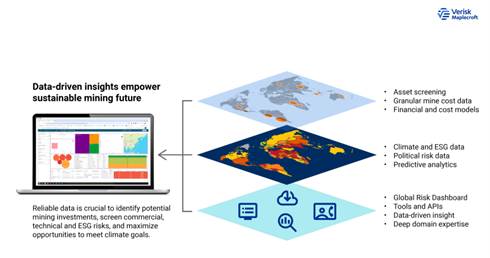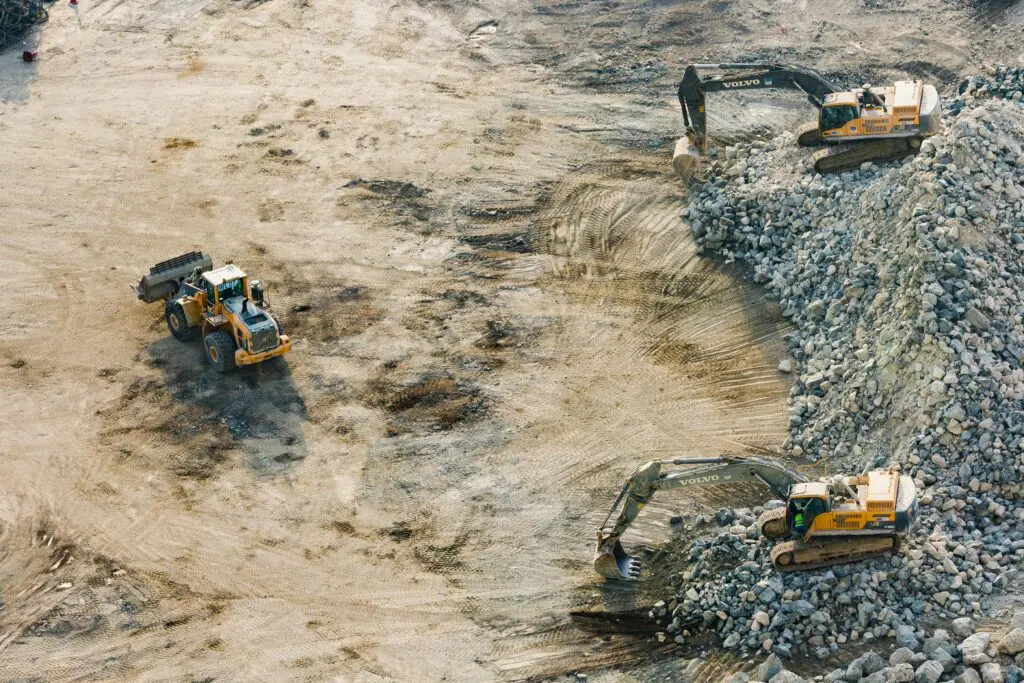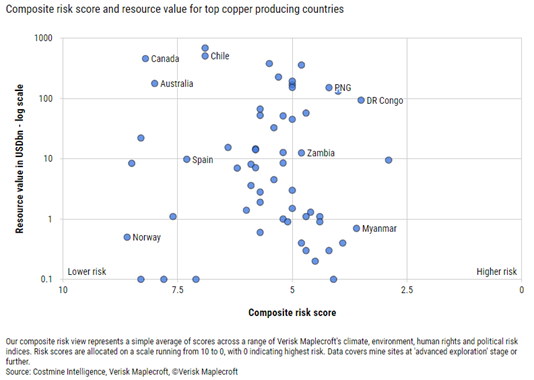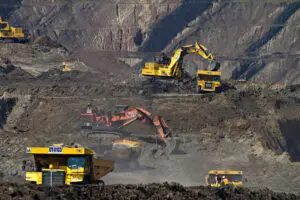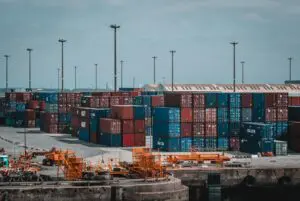Copper is set to play a pivotal role in the transition to clean energy. The metal is an essential component in various green technologies, including solar panels, wind farms and electric vehicles. But our latest analysis, conducted in collaboration with mining analytics platform Costmine Intelligence, shows that copper production itself is threatened by the rising impacts of climate change, potentially constraining its ability to power the energy transition.
Indeed, some 19% of the world’s copper projects fall within the two highest risk categories of our Extreme Precipitation Index, which measures the frequency and intensity of heavy rains in the current climate. However, that number could rise to 25% by mid-century, according to our data covering an intermediate (SSP2 4.5) emissions scenario. Sites in major copper producing countries like Canada, Australia and DR Congo will likely be among the most exposed.
Heavy rainfall can have far-reaching implications for mining operations across both production and distribution. Health and safety risks to workers, damaged access roads and electrical and structural damage at site facilities can all have an impact. Associated landslides can also create widespread disruption, both at the site and within the broader jurisdiction, impacting staff, suppliers and members of neighbouring communities.
Climate risks take sheen off ‘safer’ jurisdictions
Canada and Australia account for just under half (47%) of the 718 copper projects benchmarked within our analysis, which focuses on mine sites tagged at ‘advanced exploration’ stage or further within the Costmine Intelligence platform. As the chart below shows, both jurisdictions sit at the lower risk end of the spectrum when taking a composite view of potential threats, largely as a result of their well-established pro-business regulatory environments and comparative political stability.
Figure 1: Composite risk view masks underlying climate threats in major copper producing countries
However, the growing impacts of the climate crisis mean that assessing the long-term viability of copper projects increasingly depends on understanding their future exposure to natural hazards.
Indeed, the number of Canadian copper sites facing high or very high risks from extreme precipitation is set to more than double, from 16 projects currently to 42 by mid-century (under an intermediate emissions scenario). Australia, which hosts the second highest number of potential sites, is set to see a marginal increase, from 27 sites currently to 28 in 2050 – leaving 17% of the country’s copper projects at risk.
Countries like Mexico and DR Congo, which comparatively host fewer potential mines – 17 and 11 respectively – would see the share of assets exposed to extreme precipitation rise significantly, with the number of Mexican sites rated high risk set to grow from two in the current climate to seven by 2050. Three of the projects situated in the DR Congo face elevated risks of exposure today, but this could grow to nine by mid-century.
Figure 2: Number of high risk sites set to swell by 2050
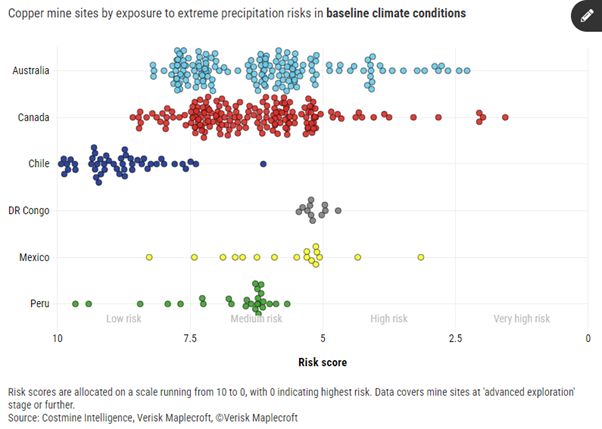
The potential ramifications of heavy rainfall range widely
The impacts of heavy rainfall on mining sites can be significant, from loss of productivity to heightening health and safety risks, and even creating or aggravating risks that compromise relations with local stakeholders, posing a threat to establishing or maintaining a social licence to operate.
While these impacts will vary depending on factors like type of mine (open pit vs underground), location, operation size, and transport infrastructure used, over the past decade forced suspensions of operations due to severe rainfall in copper mines in Chile, Peru and Australia have resulted in losses of several billion USD across the three jurisdictions.
Reconstruction efforts following an extreme precipitation event are costly and time consuming. For example, equipment may be submerged and require extensive repairs, while buildings may also become unsafe. Understanding a site’s present as well as future risk profile helps strengthen emergency preparedness and response plans.
Data-driven decision making imperative to meeting future mining needs
As we look to the future, the integration of data-driven decision making will be crucial for the sustainability and resilience of the copper mining industry. The escalating impacts of climate change, including the increased frequency and intensity of extreme precipitation events, underscore the need for a holistic approach to risk management. By leveraging the advanced analytical capabilities of Verisk Maplecroft and Costmine Intelligence, stakeholders can gain a deeper understanding of both macro trends and site-specific vulnerabilities.
To sustain copper’s pivotal role in the energy transition, stakeholders must adopt comprehensive risk mitigation strategies that consider both current and future climate impacts, ensuring the long-term viability and resilience of copper mining operations.
Figure 3: Verisk Maplecroft – Costmine Intelligence partnership unlocks new insights for the mining sector
